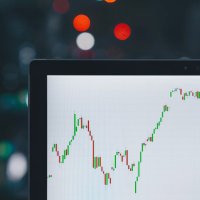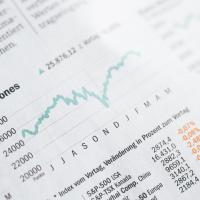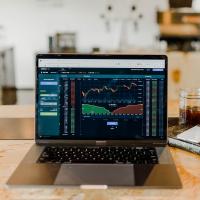Home > Investment Guide > Stock Market Investing
Trading With Price and Volume
If there is more buying than selling for a ABC stock then what results is the rise in price for that stock. Likewise, if there is more selling then buying in ABC stock then share price is likely to fall in value. This makes the study of volume a valuable indicator to determine if a stock is either in demand or likely to increase in share value in the future.
Many aspiring stock traders practice a style of stock trading popularly referred to as “momentum investing” where one attempts to identify stocks that are fluctuating in a given price range for a length of time and are likely to have explosive moves to the upside or downside out of those ranges. The confirmation for those explosive moves are taking long positions at the upper end of that price range or short positions at the lower end of that price range on greater than average volume.
Let me offer an example of the importance in volume by stating that volume is literally the fuel for stock values. Like the space shuttle when it is launched into space the majority of fuel is spent to just get it into orbit. This explosive force of energy to propel the space shuttle into space or new heights requires an above average reserve of the fuel but then the space shuttle can then use only a small portion of the remaining fuel reserve to carry out the rest of its mission. Volume is to stocks what rocket fuel is to the space shuttle.
A good average is a 150% of its normal volume but I would also stress that its important to become familiar with a given stock’s volume pattern to gain true mastery. Baker Hughes, Inc. (BHI) typically will move in force with just a 20-25% higher volume spike while some of the lesser known small-cap stocks might require 150% or more.
The study of price and volume relationships also reveals a condition known as “climatic volume” which to a skilled trader can reveal a complete reversal in a given trend. After a stock has had strong advance or decline is where climatic volume can result (the operative phrase is “after” a strong advance or decline).
After an explosive move, usually the result of a volume spike, climatic volume results when traders come into the last stages of that advance of decline and price moves sharply at the last move of its trend. At this point, all the buying and/or selling has resulted and the move has exhausted itself and volume is then considered climatic when it exceeds two times the average daily volume over the last ten days. At these extreme volume levels price often goes almost parabolic or straight up in price without a noticeable pull back.
Master traders can spot these “Bump and Run The Top” or “Rising or Declining Wedge” patterns and use these climatic volume spikes to exit their positions and then use them to spot the trend reversal and get in at the beginning of a new trend transition.
The study of the relationship between price and volume can give both technical and systemic traders the confirmation that they need to get in on explosive moves and also serve as indicators as to when its time to get out and, possibly, even spot a new trend in transition to exploit profitably. Volume should be considered as the most important precursor to price movement at the disposal of investors or traders and can possibly lead to some huge gains to those who take the time to understand the relationship between price and volume.
Copyright 2006 Billy Williams
Mr. Williams is a businessman and veteran of Desert Storm who has been trading stocks, options, and futures for almost 15 years. He has extensive training in systemic trading and technical analysis along with the insight that comes from suffering the highs and lows from trading for many years. He trades professionally as well as operate an educational website with the goal of helping aspiring traders as well as experienced traders achieve their goals in the stock market. http://www.stockoptionsystem.com
More to Read:
Previous Posts:




